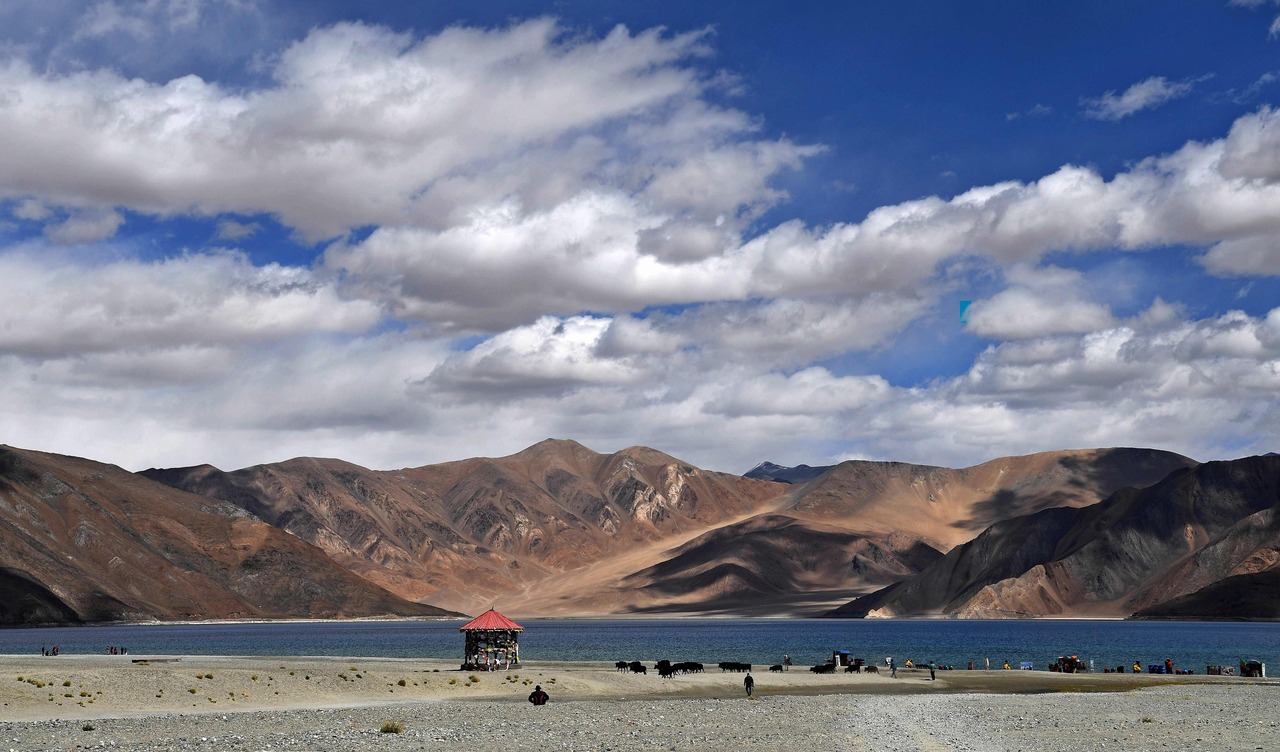Tensions rise on China-India border as both sides move in more troops
Sign up now: Get insights on Asia's fast-moving developments

China has placed about 5,000 soldiers and armoured vehicles within its side of the disputed border in the Ladakh region.
PHOTO: AFP
Follow topic:
NEW DELHI - India and China continued to remain on edge over a border row that has triggered troop build-up along a section of their undemarcated border.
Clashes between Chinese and Indian patrols at different points of the border in the north-eastern state of Sikkim and union territory of Ladakh in separate incidents on May 5 and May 9 have raised tensions and triggered a build-up of troops on both sides along at least four points on the border.
China's ambassador to India Sun Weidong on Wednesday (May 27) struck a conciliatory note, saying India and China should "seek understanding through communication and constantly resolve differences".
Still, analysts are unsure if this is a signal of de-escalation from the Chinese side.
His remarks come after military talks, held on May 22 and 23, failed to break a deadlock caused by differing perceptions on where the border starts and ends, even as diplomatic and further military talks continue.
Both sides have accused the other of blocking patrols and incursions into each other's territory.
India said it wanted to resolve the issue peacefully but would not compromise on national security.
"India is committed to the objective of maintenance of peace and tranquility in border areas with China ...at the same time we remain firm in our resolve to ensuring India's sovereignty and national security," said Ministry of External Affairs spokesperson Anurag Srivastava.
In a sign of how serious the issue is Prime Minister Narendra Modi chaired a meeting on Tuesday with National Security Advisor Ajit Doval, Chief of Defence Staff General Bipin Rawat and the chiefs of all the three armed forces to discuss the border situation.
India and China have differences along several areas of their 4,000km-long border. But both countries decided to delink border problems from other aspects of the relationship, resulting in flourishing trade ties.
Border issues, however, remain a source of tension.
While smaller infractions are dealt with at the military level, there have been instances in which a border row has escalated, requiring diplomatic intervention at the highest levels.
The last serious border row between them was in 2017 over Doklam, which is strategically close to India's Silliguri Corridor, connecting the country's north-east to the mainland.
It was resolved through high level diplomatic talks after a 74-day military standoff.
Amid a paucity of information from the Chinese side, Indian media and analysts have assessed the flare-up is due to efforts on the Indian side to upgrade infrastructure.
India has been building feeder roads along the border from the Daulat Beg Oldi Road, a key road which connects Leh to the Karakoram pass.
"Patrolling by both sides increases in the summer months, increasing the probability of such close proximity situations. Also, infrastructure on the Indian side has improved greatly over the past few years. Furthermore, China's armed forces are being more aggressive in all directions," said Mr Gautam Bambawale, former Indian Ambassador to Bhutan, Pakistan and China.
"Such border standoffs occur as there is no common perception of the LAC (Line of Actual Control). The two governments should resume the stalled process of LAC clarification so that the armed forces of the two sides have a clear line which they will not cross."
The Line of Actual Control is a demarcation line that separates Indian and Chinese territories.
The timing of the flare-up has surprised New Delhi.
China is facing the fallout of the coronavirus pandemic leading to rising tensions with the US. Tensions between them have also been rising in the South China Sea and over the Chinese government's effort to increase control over Hong Kong.
Amid all this, US President Donald Trump in a tweet on Wednesday offered to mediate on the border row.
Mr Srivastava, responding to questions on the US offer of mediation, said: "We are engaged with the Chinese side to peacefully resolve it."
Analysts said that neither side was backing down at this point.
"They (China) are not backing down. They want to send a signal we are serious about it so have left it to the diplomats to discuss. The Chinese ambassador comments should be taken in light of this," Prof Srikanth Kondapalli, a professor in Chinese studies at Jawaharlal Nehru University,
"India would not want to escalate (the border row) because of Covid 19. But we are also stretched out across the border."

